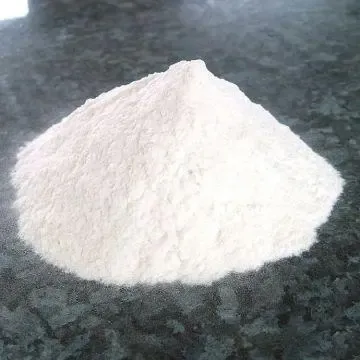
Nov . 30, 2024 02:12 Back to list
Titanium Dioxide Concrete Producers for Enhanced Durability and Performance Solutions
The Future of Concrete Integrating TiO2 for Enhanced Performance
In recent years, the construction industry has seen a significant shift towards more sustainable and efficient material choices. One of the most promising developments in this area is the use of titanium dioxide (TiO2) as an additive in concrete manufacturing. This innovation not only enhances the properties of concrete but also contributes to environmental benefits, making TiO2 concrete a focal point for modern construction.
What is TiO2 Concrete?
TiO2 concrete refers to concrete that incorporates titanium dioxide, a compound known for its photocatalytic properties. When exposed to sunlight, TiO2 undergoes a chemical reaction that helps break down pollutants, making it an effective agent for self-cleaning surfaces. This unique characteristic has prompted manufacturers to explore its integration into concrete formulations, leading to innovative applications in urban environments.
Benefits of TiO2 in Concrete
The inclusion of TiO2 in concrete offers several significant advantages
1. Self-Cleaning Properties One of the most notable benefits of TiO2 concrete is its ability to maintain cleanliness. Traditional concrete surfaces often accumulate dirt and pollutants, leading to a requirement for regular cleaning and maintenance. TiO2 reacts with sunlight to decompose organic materials and airborne pollutants, enabling the concrete to remain cleaner over time.
2. Air Purification TiO2's photocatalytic properties also contribute to urban air quality improvement. When used in building facades and pavements, TiO2 concrete assists in reducing nitrogen oxides (NOx) and volatile organic compounds (VOCs) in the atmosphere, transforming harmful substances into harmless byproducts such as nitrates and carbon dioxide.
3. Enhanced Durability The addition of TiO2 can improve the overall durability of concrete. It has been shown to increase resistance to wear and weathering, thereby extending the lifespan of structures. This can lead to decreased maintenance costs and reduced resource consumption over time.
tio2 concrete manufacturer

4. Aesthetic Appeal TiO2 concrete can also enhance the aesthetic quality of structures. The surface can be designed to reflect light, giving buildings a brighter and more attractive appearance. This is particularly beneficial in urban settings where buildings are closely packed together, allowing for improved illumination without relying on excessive artificial lighting.
Challenges in TiO2 Concrete Manufacturing
Despite its advantages, the integration of TiO2 into concrete manufacturing does not come without challenges. One of the key concerns is the cost associated with TiO2 production, which can be more expensive compared to traditional concrete ingredients. Additionally, achieving the right mix and ensuring the effectiveness of TiO2 in varying environmental conditions can be complex. Research is ongoing to address these issues, aiming to optimize the use of TiO2 while keeping costs manageable.
The Importance of Manufacturers in Adoption
The role of concrete manufacturers is crucial in the widespread adoption of TiO2 concrete. By investing in research and development, manufacturers can drive innovation, improve production techniques, and reduce costs. Establishing partnerships with universities and research institutions will be vital in exploring the long-term benefits and application techniques for TiO2 in concrete.
Looking Ahead
As urban areas continue to expand, the demand for sustainable building materials will only grow. The integration of TiO2 into concrete manufacturing represents a forward-thinking approach to addressing urban environmental challenges. With its self-cleaning abilities, air purification properties, and enhanced durability, TiO2 concrete offers a viable solution for modern construction needs.
In conclusion, the future of concrete manufacturing lies in innovative materials like titanium dioxide. Manufacturers who embrace this technology will not only contribute to cleaner and more sustainable cities but also set the stage for smarter, more resilient infrastructure. As research continues and production methods evolve, TiO2 concrete may very well redefine the standards for construction in the 21st century.
-
Premium 6618 Titanium Dioxide for GPT-4 Turbo Applications
NewsJul.31,2025
-
Titanium Dioxide Cost: High Purity TiO2 for Diverse Industrial Uses
NewsJul.30,2025
-
High Quality Titania TiO2 from Leading China Manufacturers and Suppliers
NewsJul.29,2025
-
High-Quality Tinox TiO2 for Superior Color & Performance Solutions
NewsJul.29,2025
-
High Quality Titania TiO2 from Leading China Supplier & Manufacturer
NewsJul.29,2025
-
High-Performance r6618 TiO2 for Superior Whitening and Versatility
NewsJul.28,2025
